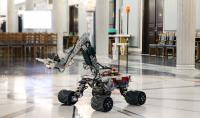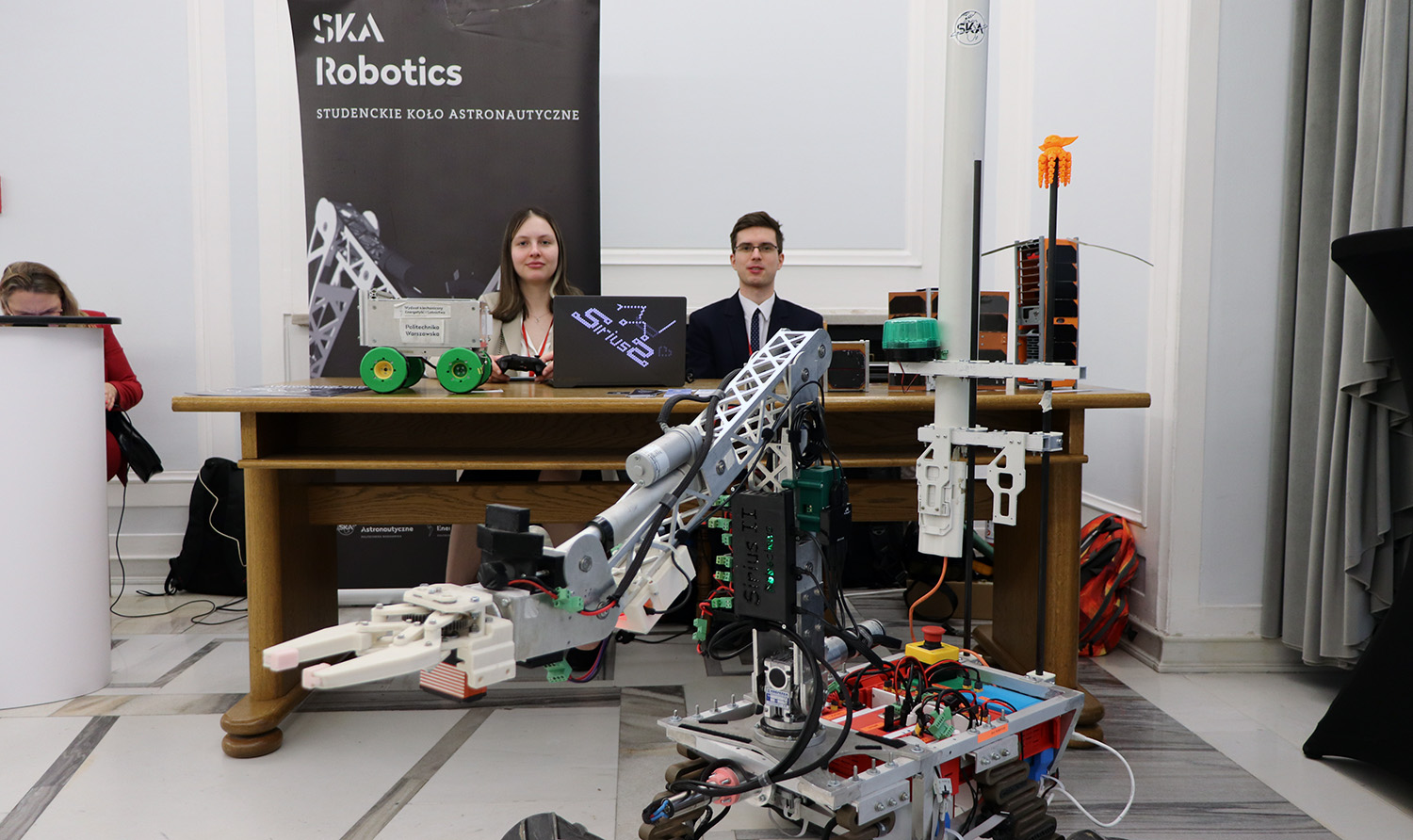WUT students go to the competition for Mars rovers designers
A team from the Students' Space Association advances to 2023 University Rover Challenge Finals! A record 37 teams from 10 countries will compete at the URC2023 Finals.
This year, the rovers will perform four missions: research (checking whether life was, is or will be possible in the collected soil samples), delivery (overcoming uneven terrain and transporting the indicated objects to the astronaut), hardware (performing precise operations on the model of the machine), navigation (autonomous driving in accordance with the guidelines).
– For each task there is a number of points to be scored, there are also penalty points – everything thoroughly described in the lengthy regulations – explains Daryna Budiakivska – who is responsible for documentation on behalf of the WUT team.
Design challenges and constraints
The team from the Students' Space Association, which operates at the Faculty of Power and Aeronautical Engineering, goes to the competition with Sirius II. It's a rover that's been in development for three years. In development, as for each competition you have to meet slightly different requirements. The design is a combination of mechanics, electronics and programming. The base is quite stable, but it also needs improving all the time. In addition, there are modules – specially developed and added for subsequent launches. That's where the most changes are.
– In our rover everything has been thoroughly checked and updated – it looks different than a year or half a year ago, and it will change before the very competition, says Daryna Budiakivska. – At the URC we will attach a spectrophotometer and a very strong scientific-research module, as well as a manipulator.
The rover must not only capable of performing the tasks, but also meet other criteria. It must not weigh more than 50 kg or exceed (after folding the manipulator) the dimensions of meter x meter x meter. There is also a price limit of $12,000. This aligns the odds and actually allows you to test your engineering skills.
– The solutions put forward can be really miscellaneous – they are based on the knowledge of students from their Faculties, but sometimes also on some crazy ideas such as: "Oh, in this article I have read that it can work, so let us check that" – says Daryna Budiakivska. – Searching for the right materials is also a demanding process, because you need a lot of reading and contact companies. The final design is the result of the gigantic cooperation of our team, the use of their knowledge and experience of external entities. We especially wish to thank the Faculty of Power and Aeronautical Engineering and our sponsors for their support.
People are the basis
30-40 people have worked on the current shape of the rover. 12 of them will be at the URC. It is a very diverse group, representing as many as 7 Faculties of the Warsaw University of Technology: mainly the Faculty of Power and Aeronautical Engineering, but also Mechatronics, the Faculty of Automotive and Construction Machinery, the Faculty of Electronics and Information Technology, the Faculty of Electrical Engineering, the Faculty of Physics and – for the first time – the Faculty of Chemistry.
The team's goal is clear – a place on the podium.
What is the most important thing about working on the rover?
– People – without a moment’s hesitation responds Aleksander Przybyłkowski - coordinator of the Sirius II project. - We need a group of cheerful, ambitious people. If the rover breaks down, it's all right, you can build a new one. And when the team breaks up, nothing will be built.
The University Rover Challenge 2023 will take place from May 31 to June 3.










